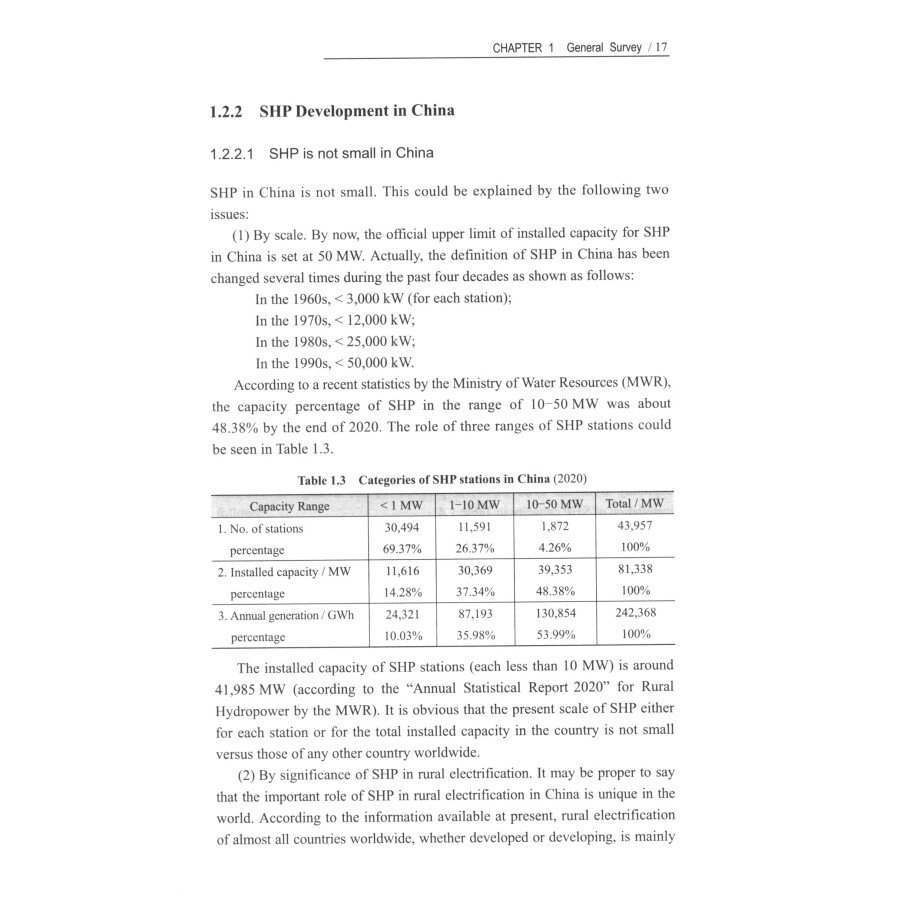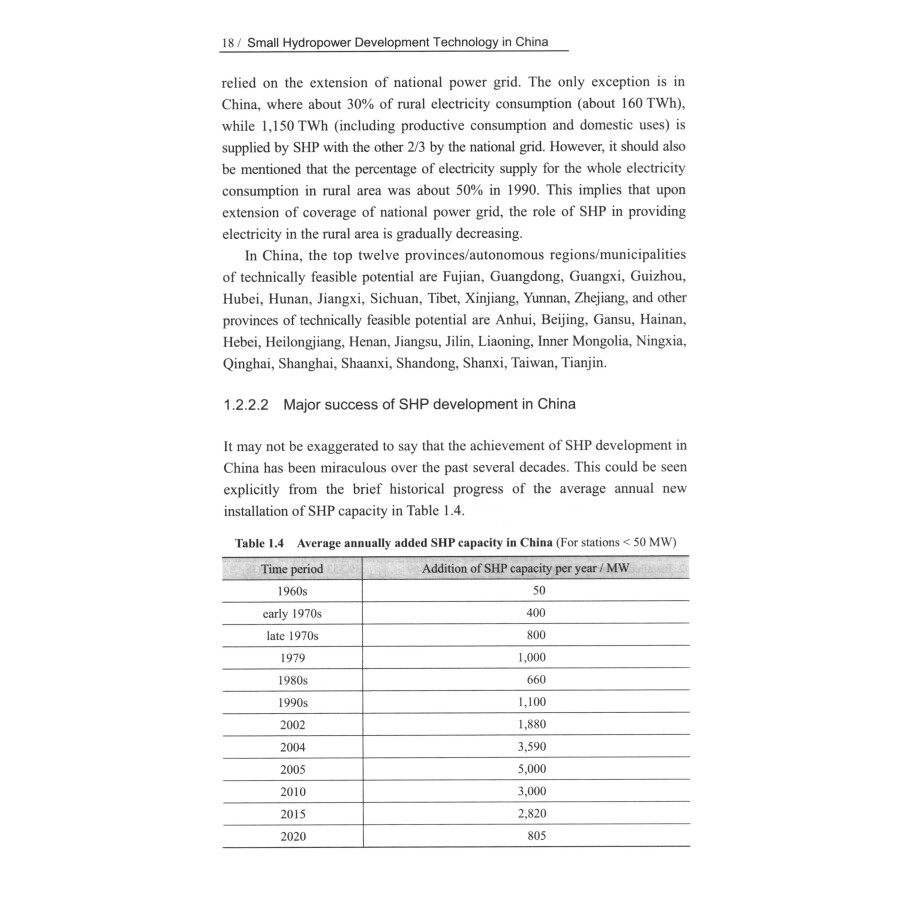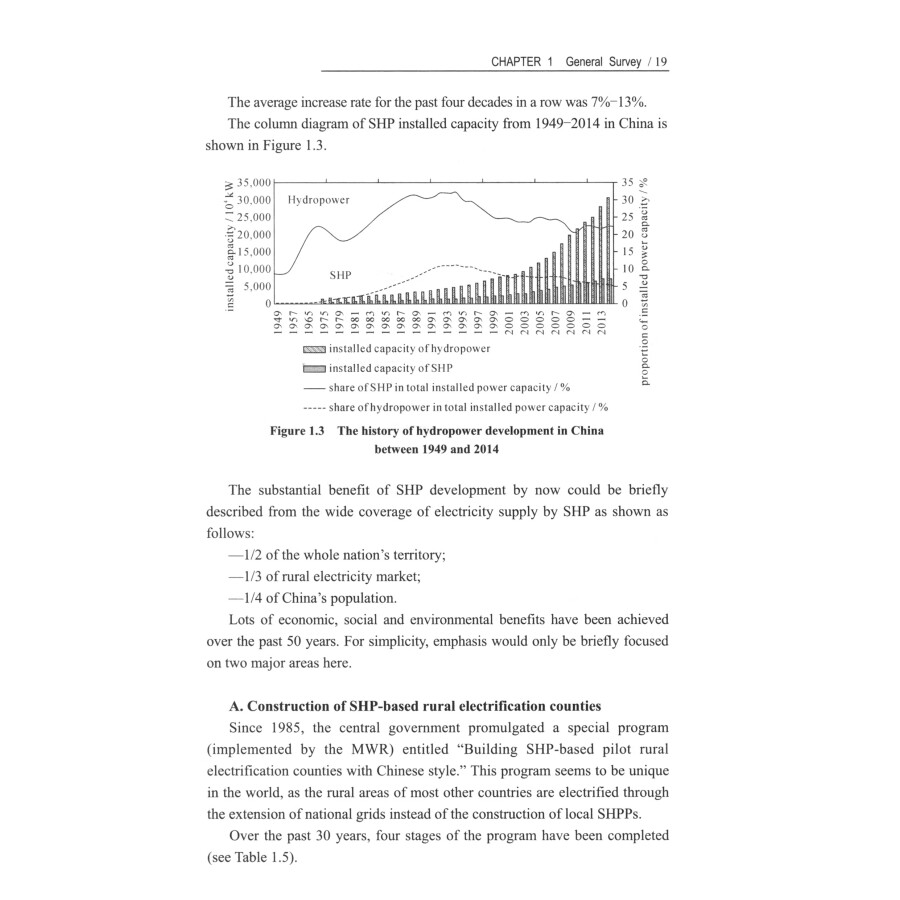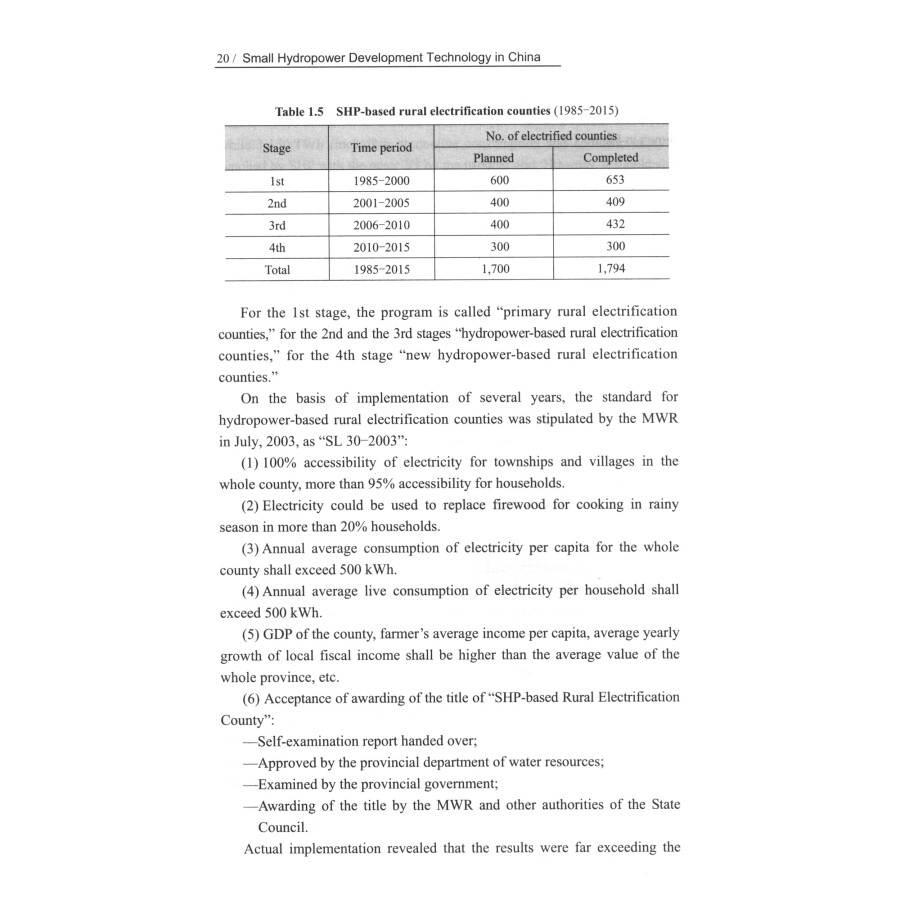Sample Pages Preview



 Preface
Preface
With the increasing concern about the global environment for the past few decades, great attention has been paid to the development of renewable energy, so as to address the issue of climate change.Small hydropower (SHP) is one of such environmentally sound energies, ideal for the decentralized and hilly rural areas. Its social and economic benefit becomes much more salient when SHP exploitation is combined with flood control, irrigation, navigation, fishery, tourism, recreation, etc. Especially in China, SHP, together with solar power and wind energy, is providing a strong guarantee for building a clean, low-carbon, safe and efficient energy system, for achieving the goal of carbon peak and carbon neutrality, and for further exerting the ecological and environmental benefits as well as ecological governance benefits.
Since the late 1970s, great importance has been attached to the development of SHP and other renewable energies by world energy sectors due to the well-known "oil crisis" and the concern on environmental pollution of traditional fossil fuel. Apart from the revitalization of SHP in some developed countries, many developing countries are also keen to start the development of SHP. But there are some difficulties, and one of the major obstacles is the lack of technology and professionals. To overcome these difficulties, relevant UN organizations have taken a series of measures, including the setting-up of regional or international Center of Excellence for strengthening technology transfer and information exchange to promote SHP development in developing countries. Therefore, Hangzhou Regional Center (Asia-Pacific) for Small Hydro Power, briefed as HRC, was established in 1981, with joint sponsorships of relevant UN organizations and Chinese government. One of the major tasks of HRC is to organize training courses, seminars and workshops for engineers and officials of developing countries in the field of SHP. There have been more than 130 training programs organized successfully since the establishment of HRC, among which some were sponsored by UN organizations while the others by Chinese government.
To improve the technical capabilities of trainees, HRC has been dedicated to preparing high-quality teaching materials from the very beginning. The materials are compiled by teachers of different speaalties, and then reviewed and revised after conducting class presentations and receiving valuable suggestions and comments from participants of various countries. Year by year, the teaching materials which cover cutting-edge theories and hands-on practice of SHP-related Fields get mature and become widely acceptable to the trainees. This book is thus edited on the basis of carefully selected teaching materials contributed by all the lecturers after years. We hereby sincerely express our special thanks to HRC's senior experts, particularly Mr.Zhu Xiaozhang, Mr. Zheng Naibo, Mr. Lu Tianshou, Ms. Cheng Xialei andMr. Pan Daqing.
We believe this book would not only be useful to the trainees of future trairung programs as a textbook, but also be a good reference to SHP practitioners around the world as well as administrative persons and decisionmakers in the SHP sector. The benefits of this book will multiply together with actual presentations and face-to-face discussions in class.
The objectives of this book are to introduce the overall knowledge of SHP development, together with fundamental understanding of the multi discipline knowledge of SHP generation. It can be seen from the content that priority is given to design, operation & maintenance and management, so that trainees could acquire more in-depth expertise for their related work. Speafic objectives of various speaalties are stated in each chapter respectively.
The authors of the book are Mr. Xu Jincai, Mr. Lin Ning, Mr. Xu Guojun, Mr. Hu Changshuo, Ms. Qiao Haijuan, Mr. Yao Zhaoming, Ms. Shi Jin, Mr. Cui Zhenhua, Ms. Shu Jing, Ms. Zhao Yuyu, Mr. Zhang Chunjun, Mr. Zhang Hua, Ms. Tang Yanqiu, Ms. Shang Cheng and Ms. Xiao Yilun.



